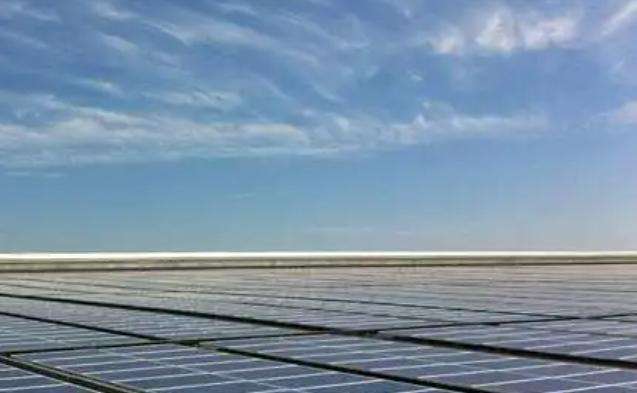Compression: mechanical energy is converted into internal energy, work: internal energy is converted into mechanical energy.
1. Intake Stroke
At this time, the piston is driven by the crankshaft to move from top dead center to bottom dead center. At the same time, the inlet valve opens and. the exhaust valve closes. As the piston moves from top dead center to bottom dead center, the volume above the piston increases and the gas pressure in the cylinder decreases, forming a certain degree of vacuum.
With the inlet valve open, the cylinder is connected to the inlet pipe and the mixture is drawn into the cylinder. As the piston moves to bottom dead center, the cylinder is filled with fresh mixture and unexhausted exhaust gases from the previous work cycle.
2. Compression stroke
The piston moves from bottom dead center to top dead center and the intake and exhaust valves close. THEcrankshaft rotates under the action of inertial forces such as the flywheel, and the piston is pushed up through the connecting rod. The volume of gas in the cylinder gradually decreases, the gas is compressed, as well as the pressure and temperature of the mixture in the cylinder. increase.
3. Power stroke
At this time, the intake and exhaust valves are closed at the same time, the spark plug ignites, the mixture burns violently, the temperature and pressure in the cylinder rises sharply and the high temperature and high pressure gas pushes the piston down causes the crankshaft to rotate through the connecting rod. Among the four strokes of the engine, only this stroke converts thermal energy into mechanical energy. This is why this time is also called engine time.
4. Exhaust stroke
At this time, the exhaust valve opens, the piston moves from bottom dead center to top dead center, and the exhaust gasare evacuated from the cylinder gradually. the piston rises. Since the exhaust system has resistance and the combustion chamber also occupies a certain volume, it is impossible to completely discharge the exhaust gases at the end of the exhaust. This portion of the exhaust gas left behind is called residual exhaust gas. Residual exhaust gases not only affect inflation, but also have adverse effects on combustion.
At the end of the exhaust stroke, the piston returns to top dead center. This completes a work cycle. Subsequently, the crankshaft continues to rotate relying on the inertia of the flywheel, starting the next cycle. This goes on and on and the engine keeps running.
Detailed information:
1. During the break-in period after engine overhaul, operating procedures and regulations for load reduction and deceleration during break-in. within the period must be strictly adhered to;
2. Maintain the correct ignition time and avoid setting the ignition time too early, which may cause sudden explosion and engine overheating;
3. Make sure you have sufficient engine oil meeting the manufacturer's original specifications and check the engine oil pressure frequently, replace the engine oil according to the provisions of the break-in period;
4. Add enough cooling water and check. cooling water volume and water temperature frequently.
In short, preventing cylinder traction problems is a complex and meticulous task. Firstly, we must grasp the key problem of excessive temperature, secondly, selectionate the material of the mating parts and the mating size deviation, and finally, with the assembly road test process comes to ensure. In this way, the phenomenon of cylinder draft can be reduced or eliminated.
According to the kinetic energy theorem, if a moving object is hindered and slows down to a stop, the object will work on the obstacle. The amount of work done is equal to the amount of original kinetic energy of the object.
So we can say that kinetic energy is the work capacity of an object due to motion. For example, a bullet flying at high speed has kinetic energy, so when it hits the steel plate, it can work on the steel key and penetrate it; a hammer hitting the forging has kinetic energy, so it can do work on the forging. and distorts it.
Baidu Encyclopedia - Gasoline Engine
There will be insufficient power and aUnstable idle speed. It is recommended to go to the repair shop for treatment: 1. The first thing to know is that an engine cylinder is not working. Since this cylinder is not working, it must be related to its combustion, so we must start with the three combustion elements to find the reason; 2. The three elements of automobile combustion are fuel injection ignition and cylinder pressure. As long as these three elements are met, the cylinder should be able to function; 3. So we check once, we first check the ignition. In this way, you can directly remove the spark plug and plug in the high voltage wire to see if it can ignite normally. If he can shoot normally, there is usually no big problem; 4. Second, check the fuel injection. Fuel injection depends on the amount of fuel injected through this nozzle. This requires a cup for myspecial urer for measuring. Generally speaking, if it can inject fuel, it will not fail. 5. Finally, the cylinder pressure. You can test this with a barometer. Normally, the normal pressure in the bottle should be around 9 bar. If cylinder pressure cannot be achieved, the engine must be disassembled for repair. Usually the valve is not closed tightly or the space between the piston rings is too large. In summary, if you perform maintenance based on these three elements, you will definitely be able to discover the cause.














